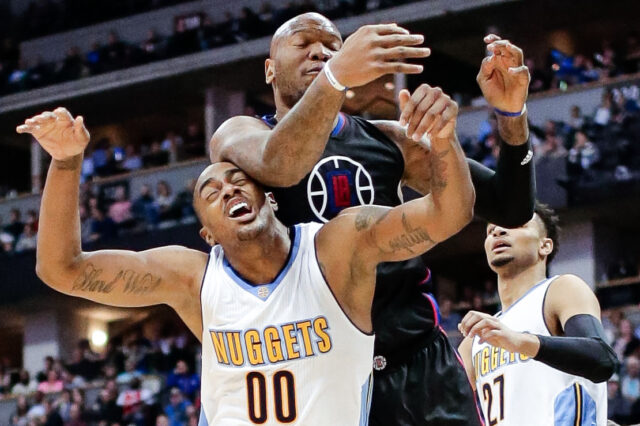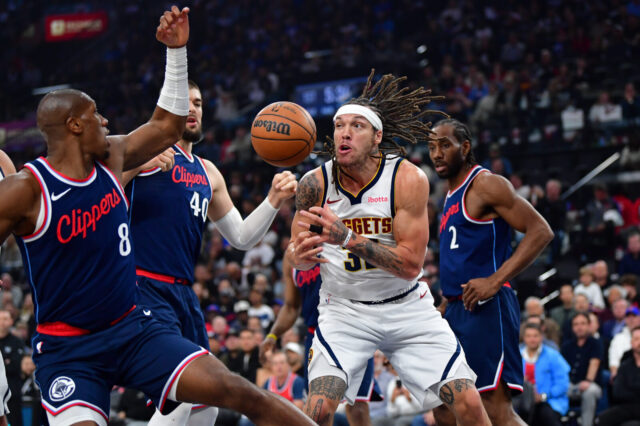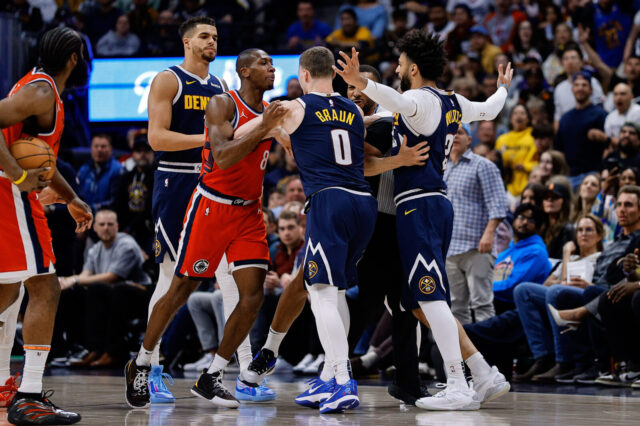In the process of covering NBA Draft prospects at Denver Stiffs, we sought out players ranked around the 10 to 60 range and ultimately narrowed it down to 25 or so prospects. Often in this process, there are some hometown players that hold a little bit of sentimental value, players that get signed to summer league teams and training camp deals but aren’t necessarily the top prospects from around the world.
That isn’t the case in Colorado this year, as both Colorado State and the University of Colorado play host to two legit NBA prospects during this draft cycle. Brandon Ewing covered CSU forward David Roddy on Monday, and today, I’m covering Jabari Walker, who just completed his sophomore season as a leader for a strong Buffaloes team. Things didn’t end well for Walker as he and CU were ousted in the NIT tournament by St. Bonaventure, but the vast majority of Walker’s season was very, very strong.
Walker, like many college players, declared for the draft but is retaining his college eligibility, giving him some flexibility during the draft process. It’s unlikely he will stay in the draft unless he receives a promise of some sort, which means to expect him to be selected within the top 40 picks or so. Is he that caliber of player at the next level, or is he just another hometown player that Nuggets fans might have a soft spot for?
Let’s dive in.
Jabari Walker, forward, University of Colorado
Vitals
Height: 6’9”
Wingspan: 7’0”
Weight: 215
Age: 19 (7/30/2002)
Walker’s per game stats for his sophomore season at CU (2021-22)
Walker averaged 14.6 points, 9.4 rebounds, and 1.2 assists per game for Colorado in his sophomore season. He shot just 34.6% from three-point range this year but is 39.9% for his entire college career due to a sterling shooting season as a freshman. Walker averaged just 0.7 steals and 0.7 blocks in over 28 minutes per game. He was on the 2021-22 All-Pac-12 team.
Strengths
Physical Tools
Walker stands at 6’9” and possesses a 7’0” wingspan. At 215 pounds, he has the strength to battle bigger players on the interior but also the quickness (at least defensively) to chase around smaller players. He’s a good, not great vertical athlete, and how well he tests at the Draft Combine will probably determine some of the takes surrounding him. He’s strong enough to hold his position for dunks against mismatches around the rim, and he’s springy enough to get off the ground quickly when needed.
Walker doesn’t strike me as a player that will sky for monster dunks and rejections on either end of the floor. He CAN do those things, but he’s more of a functional athlete with fluid hips and good feet. Those are athletic traits that teams can work with on both ends of the floor, especially on defense.
Aggressiveness driving, cutting and rebounding
One of the tenets of the NBA Draft is that there are certain skills that translate from the college to the pros really well. Rebounding is one of them. Toughness is another. Walker consistently displayed both throughout his freshman and sophomore seasons, with his 9.4 rebounds per game leading the Pac-12 this year. He ranked 11th in offensive rebounding percentage and first in defensive rebounding percentage, fighting for contested boards and displaying a good nose for the ball by hustling up rebounds outside of his area.
On the cutting front, Walker was often used as a roller in pick and roll and demonstrated a good feel for finding the soft spots in the opposing defense. Sometimes, that manifested in shots around the basket. Other times, he ended up between the dotted circle and free throw line, either taking a jumper for power his way to the front of the rim instead. Walker did struggle at times to finish efficiently around the rim, but that has potential to change with NBA spacing.
The most important factor for Walker will be his toughness though. He will have to maintain thick skin at the NBA level if he wants to stick, and he appears to have that toughness on both ends of the floor.
Defense
The side of the floor that will be most prevalent to Walker at the NBA level is defense. With his athleticism and frame already being NBA caliber, Walker has the potential to be an impactful defender on the wing guarding up and down lineups. He’s a good on-ball defender with strength, quick hips, and long arms to contest shots. He’s a good off-ball defender with his high level of awareness, seeing the floor well and making rotations to prevent easy shots.
It’s difficult to know where Walker profiles best defensively, whether it’s as an on-ball defender against guards or as a back line defender behind pick and rolls. He’s not a great weak side shot blocker, but he’s smart and agile enough to make rotations quickly and clog up the lane for opposing offenses as a result. The good news is that he can at least do a little bit of everything, which might be the most important factor in today’s NBA.
One small note though: Walker does get beat. He’s not a defensive stopper and shouldn’t be treated as such. There are times where he doesn’t finish plays or get all the way to the contest point where he can actually make an impact on the shot. Whether that’s a top end athleticism thing or a hustle thing or a defensive IQ thing is unclear.
Shooting Potential
Walker shot better in his freshman year than last season’s sophomore year, but for his career, he’s still a 39.9% three-point shooter on decent volume across two years. His form is what I’d call “quiet” because it involves a fairly simple load and release without too much mechanical noise behind it. It’s a slow, methodical release though, and he will need to speed things up at the NBA level. He shoots the ball confidently in transition, off the catch, and occasionally off the dribble. He isn’t a movement shooter and is definitely better as a stationary option; however, that doesn’t mean he can’t be an impactful floor spacer.
Walker was also a career 78.3% free throw shooter. It’s likely he will be at least an adequate three-point shooter at the next level. Nothing about his three-point stroke and percentages strikes me as something that won’t translate to the NBA with additional time and repetition.
Weaknesses
1-on-1 Scoring
Walker was the first option at CU this past year after McKinley Wright IV departed the program. He averaged the most shots per game and maintained the highest usage rate; however, he won’t be filling that role at the NBA level. He struggled as a 1-on-1 scorer in college, and the majority of his 1-on-1 possessions resulted in him driving into the paint and trying a spin move into an open shot. He can face up and hit a jumper in the mid-range, but it isn’t a go-to move, and NBA teams definitely will not be asking him to create his own offense if he can help it.
Shooting upside
Much like the 1-on-1 scoring, there appears to be a certain ceiling to what Walker can offer NBA teams in terms of his shooting ability. He’s not really a movement shooter which limits his ability to utilize screens or handoffs. There’s always a chance he could develop into more of a movement shooter, but at 6’9” with a 7’0” wingspan, he doesn’t need to do too much more than tighten up his mechanics, quicken his release, and shoot over opponents in perimeter situations. That will often be enough to adequately space the floor.
Not a true playmaker for others
Walker can do a little bit of ball handling and playmaking, more than a traditional power forward, but he isn’t going to wow teams with his passing and court vision on the offensive end. He does have good spatial awareness on cuts, but the numbers don’t really lie here. A ratio of 1.2 assists to 2.3 turnovers per game in his sophomore year isn’t going to get the job done at the next level. It’s likely that his role will be simplified instead. Still, he did have some good passes this year.
Verdict
Jabari Walker certainly LOOKS the part of a 3&D forward at the NBA level. His physical tools and imposing profile are exactly what most NBA teams are looking for as part of a versatile wing and forward rotation. Solid defense, projectable shooting, and decent spatial awareness certainly paint the picture of a potential rotation player that might go undrafted.
Still, it’s not perfect. There were times where Walker, despite being the first option for CU, didn’t really know where to be and floated offensively. Part of that was because he wasn’t the fulcrum of the offense, but it was also because he spent some time on the perimeter and some time on the interior without being especially efficient in either zone. He will need a defined role at the NBA level to take advantage of his skill set, most likely as an athletic power forward who can switch 2 thru 4.
Is that good enough to be selected by the Denver Nuggets at 21st overall? Probably not. The Nuggets need to add to their wing rotation, and while Walker CAN play the wing, it’s probably not his best position. He and 21-year-old Zeke Nnaji would likely become superfluous as they’d both be looking to fill that bench power forward role. The Nuggets need someone who can handle minutes at shooting guard or small forward consistently, and Walker isn’t quite the ball handler, passer, or shooter to be able to do that.
If Denver acquires a second round pick though, don’t be surprised if they take a considerable look at Jabari Walker. He’s only 19 years old, and the Nuggets could use some of the athleticism, rebounding, and switchability he offers. If Denver’s willing to wait a year for him to continue developing at the NBA level, he strikes me as a player who will find his way into an NBA rotation as a defensive forward sooner rather than later.


